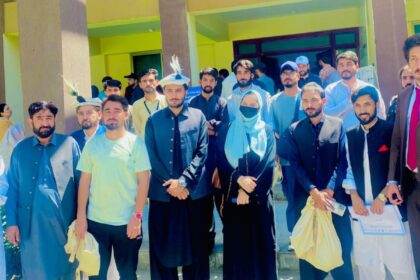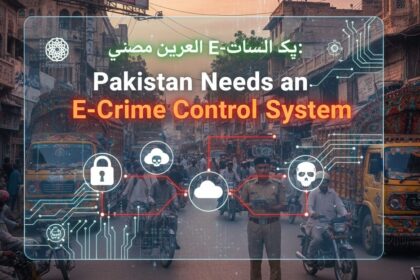The Alarming Air Quality Index in Lahore: A Growing Threat to Human Life
By: Czechangez Khan Jadoon
Lahore, one of the most populous cities in Pakistan, is grappling with a severe air quality crisis that poses a significant threat to the health and well-being of its residents. The city’s Air Quality Index (AQI) has consistently been ranked as one of the worst in the world, with levels often reaching hazardous levels. The situation is dire, and immediate action is required to mitigate the effects of this environmental disaster.
The AQI in Lahore has been consistently high, with readings reaching as high as 307 in the last 24 hours, categorizing the air as “hazardous”. ¹ This is a stark contrast to the World Health Organization’s (WHO) recommended annual limit. The city’s air quality is primarily affected by fine particulate matter (PM2.5), which is over 28 times higher than the WHO’s recommended annual limit. ² The current real-time AQI level in Lahore is 183, classified as “unhealthy,” with PM2.5 levels recorded at 102 µg/m ³ and PM10 levels at 134 µg/m ³.
The high levels of air pollution in Lahore have severe implications for human health. Exposure to poor air quality can lead to respiratory problems, cardiovascular disease, and even premature death. The situation is further exacerbated by the fact that many residents are unaware of the risks associated with air pollution, and few take necessary precautions to protect themselves. According to health experts, prolonged exposure to such high pollution levels can result in people facing severe health issues, including heart disease, lung cancer, stroke, and chronic respiratory illnesses.
The causes of air pollution in Lahore are multifaceted. Some of the primary contributors include:
- Vehicular Emissions: The rapid growth in the number of vehicles on the road has led to an increase in emissions, contributing significantly to air pollution.
- Industrial Pollution: Industrial activities, particularly those related to brick kilns and factories, release toxic pollutants into the air, further exacerbating the problem.
- Crop Burning: The burning of crop residues by farmers in neighboring areas contributes to the high levels of air pollution in Lahore.
- Lack of Effective Waste Management: Inadequate waste management practices and lack of enforcement of environmental regulations have worsened the situation.
To mitigate the effects of air pollution in Lahore, immediate and sustained action is required. Some measures that can be taken include: - Implementing Stricter Emissions Regulations: The government needs to enforce stricter emissions standards for vehicles and industries to reduce pollution.
- Promoting Alternative Energy Sources: Encouraging the use of alternative energy sources, such as solar and wind power, can help reduce reliance on fossil fuels and decrease emissions.
- Improving Public Awareness: Public awareness campaigns can educate residents about the risks associated with air pollution and promote individual actions to reduce exposure.
- Enhancing Air Quality Monitoring: Regular monitoring of air quality and timely dissemination of information can help residents make informed decisions about their activities.
- Climate Diplomacy: Engaging in climate diplomacy with neighboring countries can help address the issue of transboundary pollution.
The Punjab government has taken some steps to address the issue, including ³: - Air Quality Monitoring: The government has established air quality monitoring systems to track pollution levels and provide real-time updates.
- Smog Action Plan: The government has developed a smog action plan to reduce pollution and mitigate its effects.
- Public Awareness Campaigns: The government has launched public awareness campaigns to educate residents about the risks associated with air pollution.
The air quality crisis in Lahore is a pressing issue that requires immediate attention and action. The government, residents, and stakeholders must work together to mitigate the effects of air pollution and ensure a healthier environment for future generations. By implementing effective measures and promoting sustainable practices, we can reduce the risks associated with air pollution and create a cleaner, healthier Lahore for all.
Based on the analysis above, we recommend the following: - Increase Funding: Increase funding for air quality monitoring and pollution reduction initiatives.
- Strengthen Enforcement: Strengthen enforcement of environmental regulations and ensure that industries and vehicles comply with emissions standards.
- Promote Sustainable Practices: Promote sustainable practices, such as using public transport, carpooling, and reducing energy consumption.
- Public Awareness: Launch public awareness campaigns to educate residents about the risks associated with air pollution and promote individual actions to reduce exposure.
- Regional Cooperation: Engage in regional cooperation with neighboring countries to address transboundary pollution and promote sustainable development.
By working together, we can address the air quality crisis in Lahore and create a healthier environment for its residents.











